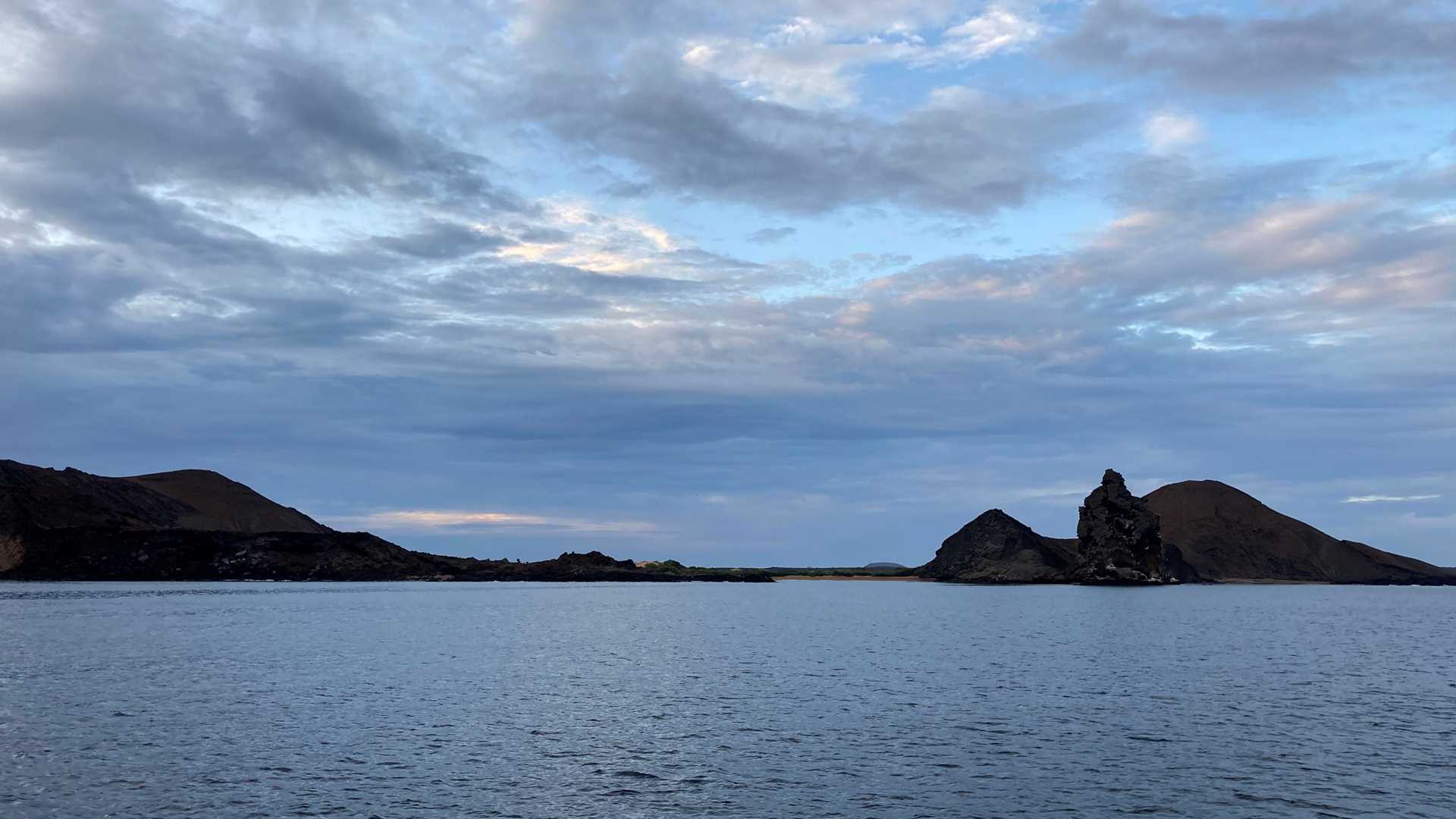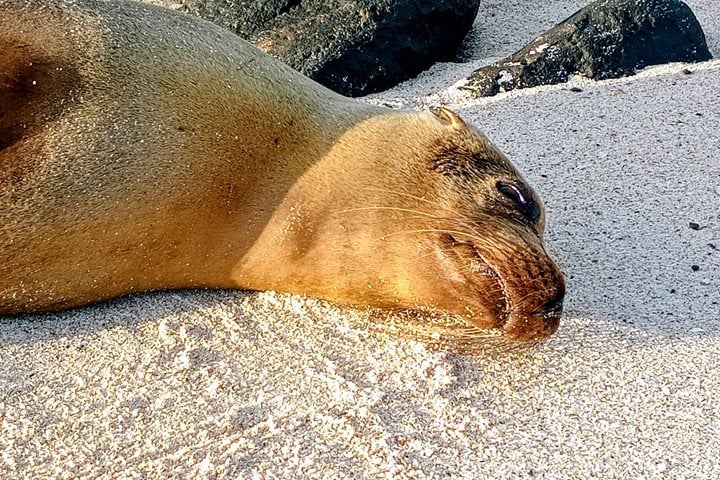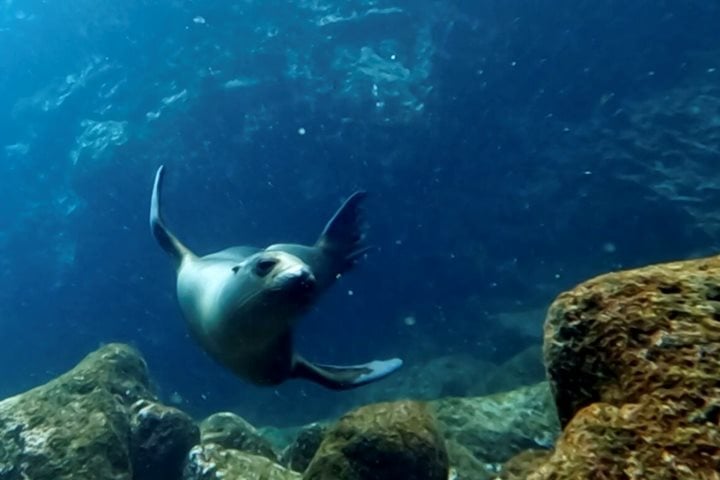A great morning was waiting for us as we reached the east coast of Bartolome Island, with a fantastic landscape and great volcanic formations. Of course, we couldn’t miss Pinnacle Rock, the remains of a tuff cone, on our hike to the main volcano. With 400 manmade stairs, the view from the volcano is breathtaking. We clearly observed the east coast of Santiago Island with its black lava field. Snorkeling was great, with the chance to observe a Galapagos penguin at his feeding site.
The afternoon gave us a chance to find Galapagos land iguanas basking around the trail of Cerro Dragon on Santa Cruz Island. Primary vegetarians, this reptile feeds mainly but not exclusively on Opuntia cactus. The iguanas remained still while guests of National Geographic Islander walked beside them. But the biggest surprise was observing Galapagos flamingos as they fed on tiny crustaceans surrounded by green vegetation.







